The particles released during manufacturing processes are hazardous to both worker and equipment health, quickly leading to a number of problems if particles are not captured by dust collection equipment and filtered from facility air. Dust collection systems address this problem by drawing contaminated air through a filter or separator, trapping harmful particles, and releasing cleaner air into the atmosphere or back onto the work floor. Read More…
Scientific Dust Collectors (SDC) began in 1981 when our first patent for improving filter cleaning was issued. Since then, SDC has been issued a number of additional related patents for improvements in dust collector cleaning technologies including our patented nozzle-based cleaning system which is superior to other collectors. Combined with our High Side Inlets, Wide Filter Spacing, and Inlet...
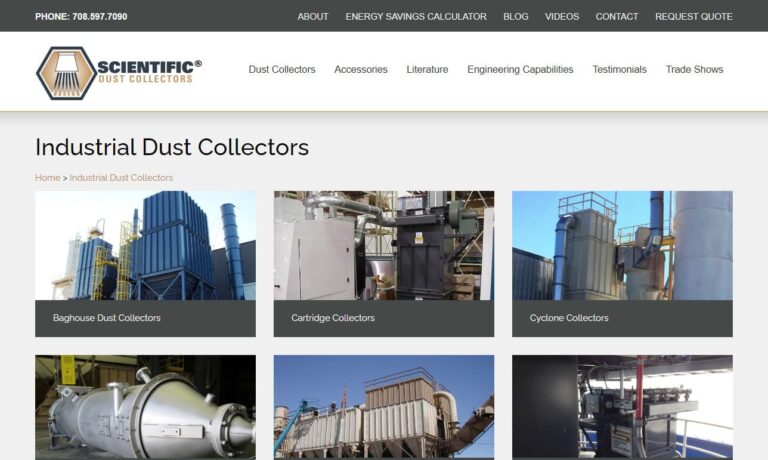
Griffin Filters is a trusted and dedicated leading manufacturer in the dust collector industry. We offer a wide selection of dust collectors with customization options available in order to serve various industries. Our experts are committed to manufacturing high-quality dust collectors that fit our customers' needs at competitive prices. Since its start in 1950, Griffin Filters has been setting...
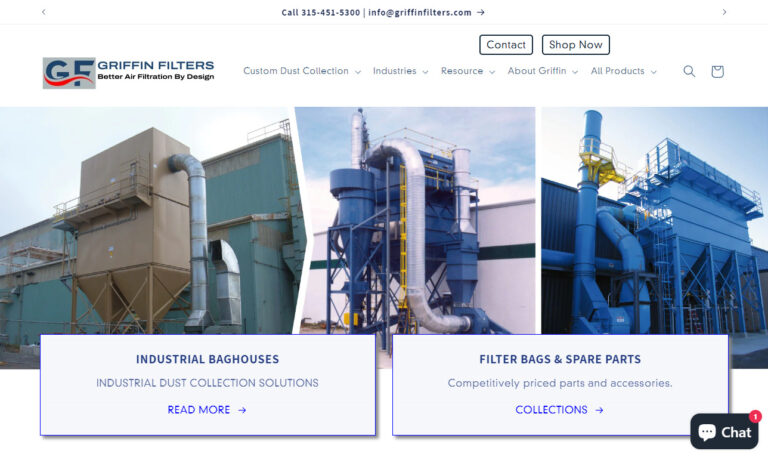
Ever since our inception in 1989, Robovent has been a leader in the manufacturing and design of ventilation and filtration systems. We have experience coming up with solutions to protect our customers from a wide range of dust, including aluminum dust, cast iron grinding dust, fertilizer dust, and more. Industries we serve include automotive, military, construction, medical, and aerospace. For a...
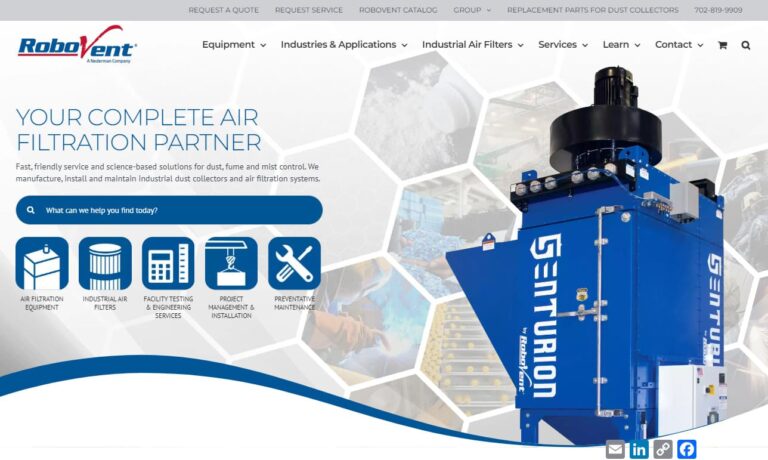
Our world-class facilities set us apart from the competition. We work hard to make our customers happy with our air filters. We can provide what you need to keep your air clean in whatever industry you are in. Our goal is to exceed your expectations so you can focus on what you do best! Whether you need support in design, products, delivery, or support, we can supply it all!
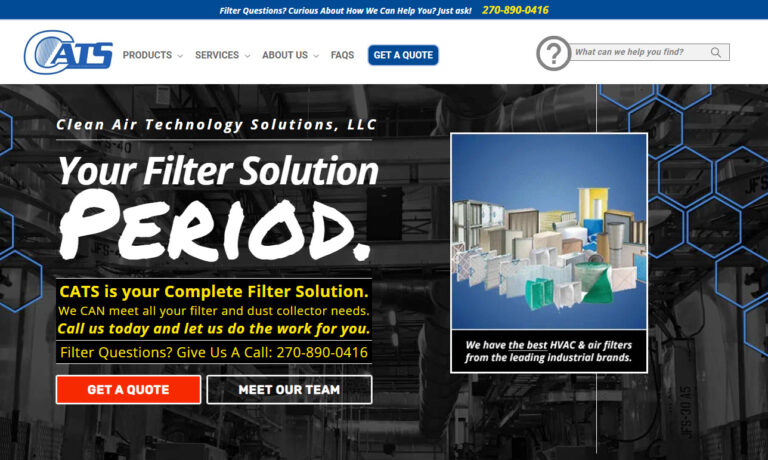
Our world-class facilities set us apart from the competition. We work hard to make our customers happy with our dust collector systems. We can provide what you need to keep your air clean in whatever industry you are in. Our goal is to exceed your expectations so you can focus on what you do best! Whether you need support in design, products, delivery, or support, we can supply it all!
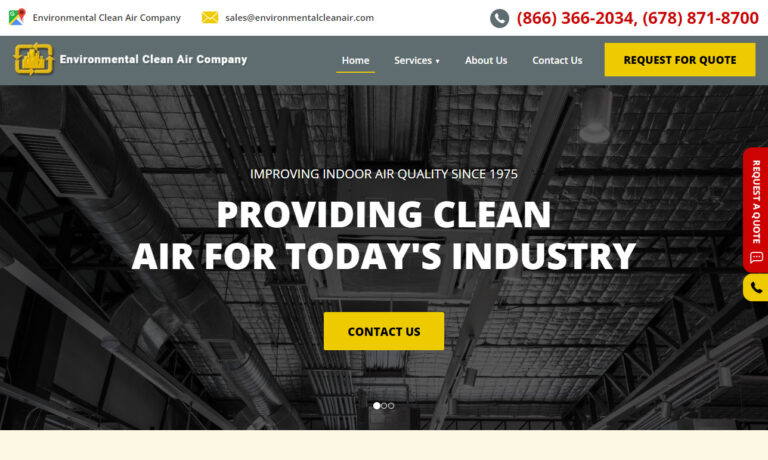
At Coral USA Innovative Air Solutions, we are committed to delivering high-performance dust collection systems that enhance workplace safety, improve air quality, and ensure compliance with industry regulations. With extensive experience in air filtration and dust control, we design and manufacture advanced dust collectors that effectively capture and remove airborne contaminants, providing...

Our dust collecting systems are designed to eliminate respirable airborne contaminants from the work environment. Eliminating airborne contamination in the workspace can lead to better employee performance and a lower rate of absenteeism.

More Dust Collector Manufacturers
The particles emitted during manufacturing can pose serious risks to both workers and machinery, creating a range of issues if not effectively managed. Without proper dust collection equipment, these particles can linger in the air, leading to health hazards and equipment damage. Dust collection systems mitigate this risk by pulling the contaminated air through a filter or separator, capturing the harmful particles, and then expelling cleaner air either back into the workspace or into the environment. Whether you operate a small shop or a large industrial facility, choosing the right industrial dust collector is essential for maintaining air quality, ensuring regulatory compliance, and optimizing the lifespan of your equipment.
Applications
Dust collectors and collection systems are essential across a range of industries, ensuring clean and safe working environments. In metalworking shops, these systems efficiently capture the dust and metal fragments created during cutting, grinding, and welding, preventing the dispersion of harmful airborne contaminants and safeguarding workers’ respiratory health. Similarly, in woodworking shops, dust collection systems manage sawdust and wood debris generated through cutting, sanding, and routing, reducing fire risks and maintaining cleaner air for employees. Recycling plants employ dust collectors to capture and manage the dust and particles generated during material sorting and processing. This not only fosters a healthier work environment but also mitigates dust-related hazards. Similarly, in cement production and mining, dust collection systems control the airborne dust that arises during material handling, crushing, and grinding, thereby reducing respiratory risks and enhancing air quality. The medical and pharmaceutical sectors rely on these systems to maintain high cleanliness and safety standards by managing dust from manufacturing and processing. Dust collectors are also crucial in industries such as automotive, construction, agriculture, glass, and food processing, where they ensure worker safety and product quality by managing airborne particles. In essence, dust collection systems are vital across a range of industries, safeguarding worker health, adhering to regulatory standards, and supporting efficient production processes.
- Metalworking: Removal of fine metal particles, fumes, and grinding dust protects workers and prevents machine wear.
- Woodworking: Collection of sawdust and wood shavings reduces fire hazards and maintains a safe working environment.
- Pharmaceutical Processing: Ensures compliance with cleanroom standards by capturing hazardous powders and chemical residues.
- Food Manufacturing: Maintains food safety by preventing cross-contamination and controlling allergens.
- Mining & Cement: Controls silica dust, reducing long-term respiratory health risks and supporting environmental compliance.
- Recycling & Waste Processing: Enhances air quality by collecting dust generated from sorting and shredding materials.
- Automotive & Aerospace: Captures paint overspray, adhesives, and composite dust for both worker safety and finish quality.
Thinking about how a dust collection system could benefit your operation? Explore which dust collector type is right for your industry or facility size by considering factors like dust particle size, air volume needs, and specific regulatory requirements.
History
Since the peak of the Industrial Revolution in the 1800s, dust collection systems have been in use. It was during this era that manufacturing companies first encountered the massive quantities of dust and debris produced by running machines and processing large volumes of metal and wood.
In the mid-19th century, an American innovator named S.T. Jones made history by patenting the very first industrial dust collector, a single-bag filter he introduced in 1852. His pioneering design set the stage for future advancements. Fast forward to 1921, and a German inventor named Wilhelm Beth pushed the boundaries even further by patenting three distinct dust filter blueprints. Each of Beth’s designs offered a unique approach: one utilized hose or tubular filters to purify streams, another employed a straightforward cloth filter for cleaning gasses and air, and the third featured a mechanism that used shaking or agitation to maintain filter efficiency.
Air filtration took a major leap forward at the dawn of the 1950s with the advent of reverse air jet systems. This innovation was soon followed by the development of pulse jet filtration around the early 1960s. Both breakthroughs revolutionized filtration by enhancing its effectiveness and efficiency. They achieved this in part by minimizing the need for mechanical components, streamlining the process compared to earlier systems.
In the 1970s and 1980s, a growing awareness of environmental issues began to shape consumer priorities. As concerns about the nation’s carbon footprint and public health intensified, the government responded by imposing stricter emissions regulations on businesses. This shift significantly boosted the popularity of dust collection systems, as companies sought to comply with the new standards.
As the dust collection industry evolves, engineers are creating compact, cleaner, and more efficient equipment for separating and filtering. Their aim is to enhance performance across various sectors, while also boosting worker safety and safeguarding environmental health. Today, dust collectors are engineered for energy efficiency, advanced filtration, and compatibility with smart facility management systems, ensuring they meet the latest environmental and occupational safety standards.
Types
Industrial dust collection systems typically fall into two main categories: fabric filters and inertial separators. Fabric filters encompass systems such as fabric filter baghouses and jet dust collectors, which rely on textile materials to trap dust particles. Inertial separators, on the other hand, use physical forces to separate dust, with examples including cyclone dust collectors, multi-cyclone dust collectors, settling chambers, and baffle chambers.
Additional dust collection options encompass wet dust collectors, cartridge collectors, compact dust collectors, portable units, downdraft tables, electrostatic precipitators, and shop vacuums. When evaluating dust collection solutions, consider whether your application requires a centralized system for facility-wide air filtration or point-source dust extraction at individual workstations.
- Baghouse Dust Collectors: Widely used for their high efficiency in filtering large volumes of fine dust, suitable for heavy-duty industrial environments.
- Jet Dust Collectors: Employ pulses of compressed air to clean filter bags, reducing manual maintenance and maintaining consistent airflow.
- Cyclone Dust Collectors: Use centrifugal force to separate larger dust particles before they reach the main filter, ideal for woodworking, metalworking, and mineral processing.
- Cartridge Dust Collectors: Compact and highly efficient, with pleated filter media that provides a large surface area in a small footprint; often used in pharmaceuticals, food processing, and welding operations.
- Wet Dust Collectors / Wet Scrubbers: Remove hazardous dust, fumes, and even explosive particulates from the air stream using water or other liquids, making them highly effective for combustible dust applications.
- Electrostatic Precipitators: Use electrical charges to capture and remove ultrafine particles, smoke, and fumes from the air, commonly found in power plants and chemical processing facilities.
- Portable and Compact Dust Collectors: Mobile solutions for temporary or small-scale operations; great for job sites or confined spaces.
- Downdraft Tables: Integrated workbenches with built-in extraction for capturing dust and fumes at the source during grinding, welding, or sanding.
- Shop Vacuums: Heavy-duty, versatile systems designed for wet/dry cleanup in commercial and industrial settings.
Fabric filters are sophisticated dust collection systems designed to trap dust particles as they pass through fabric material filters. These filters are typically crafted from woven cotton, felted cotton, glass fiber, or similar materials. Known for their high efficiency, fabric filters can capture over 99% of fine particles. Among them, the baghouse is the most widely used type, renowned for its effectiveness in managing dust and particulate matter.
Baghouses, also known as baghouse dust collectors, are the most prevalent and economical choice for managing dust. They operate by channeling contaminated air through ducts into a hopper-shaped structure. Inside, a fan creates a vacuum that pulls the air through fabric filters, which are made from materials like cotton, synthetics, or glass fiber. These filters capture dust, smoke, and other particles, ensuring that the air leaving the baghouse is clean and free of impurities.
Dust particles left behind either adhere to the filter or settle into an airlock at the bottom of the hopper, which is regularly emptied. As dust builds up on the filter, it enhances the filter’s ability to trap even finer particles. However, if the dust layer becomes too thick, it can put undue strain on the system, necessitating periodic cleaning to maintain adequate airflow through the filters. To address this, baghouse dust collectors are often fitted with vibrators to shake the filters and dislodge the accumulated dust.
Jet dust collectors belong to the baghouse family of dust collectors. They feature a mechanism where jets of compressed air are employed to blast away the dust accumulated on the fabric bag filters, effectively clearing them of excess debris and maintaining optimal performance.
Inertial separators are devices designed to collect dust by harnessing the forces of gravity and inertia, rather than using filters. They work by channeling dust-laden air through a series of mechanisms that exploit these forces to separate the dust from the gas. The dust, once separated, typically falls into a storage hopper. These separators excel at capturing larger dust particles from polluted air. Notable examples of inertial separators include cyclone dust collectors, multi-cyclone dust collectors, settling chambers, and baffle chambers.
Cyclone dust collectors harness the power of centrifugal force within a specially designed hopper-shaped chamber to efficiently separate particles from the air. As air spirals rapidly inside the chamber, the heavier dust particles are flung against the walls and descend to the bottom, where they are gathered. This method of dust collection is widely utilized across various industrial environments for its effectiveness in maintaining clean air and enhancing operational efficiency.
Multi-cyclone dust collectors feature a single main inlet and outlet, but inside, they house multiple cyclone cylinders working in parallel. This setup contrasts with single-cyclone dust collectors, which operate with just one cyclone.
Settling chambers slow down the airflow, giving heavier particles a chance to drop out of the stream more rapidly. These chambers are frequently used in the initial stages of air purification processes. For example, they prepare air streams for dust collectors like baghouses, which handle the finer dust particles.
Baffle chambers create a barrier that makes the air abruptly change direction. This sudden shift causes the heavier particles to lose their momentum and drop to the bottom of the chamber, unable to stay suspended in the airflow.
Wet scrubbers, sometimes referred to as wet dust collectors, are specialized systems designed to capture dust particles from gas streams using liquids, typically water. These devices, which include downdraft tables and unit dust collectors, play a crucial role in air pollution control. In industrial settings, wet scrubber technology goes further by tackling air contaminants on a molecular level, efficiently removing soot, smog, and fine chemical pollutants.
Cartridge dust collectors are compact and efficient, offering superior airflow compared to bag filters. Their design allows them to cover a larger area and necessitates less frequent maintenance, making them a practical choice for various applications. Cartridge-style collectors are often preferred for processes generating fine, dry dust, such as plasma cutting, powder coating, and pharmaceutical production.
Small dust collectors are engineered to fit into compact areas, allowing users to maintain excellent air quality even in the most confined or challenging spaces. Mini dust collectors are popular in laboratories, technical workshops, and education facilities where space is at a premium.
Portable dust collectors, often called unit dust collectors, are compact and self-contained systems designed for effective localized dust management. Their mobility allows users to shift these devices effortlessly from one spot to another, ensuring targeted dust collection wherever needed. These collectors typically employ fabric filters or cyclonic action to capture airborne particles. They can be used either as supplementary units alongside larger systems or as standalone solutions in place of more extensive setups. Ideal for smaller spaces, portable dust collectors are both affordable and space-efficient, making them a practical choice for various environments.
Downdraft tables are specialized work surfaces equipped with integrated dust collection systems. These systems are engineered to capture and filter metal and wood dust generated during activities like welding and wood cutting, ensuring a cleaner and safer workspace.
Electrostatic precipitators function through the process of ionization. They first impart a negative charge to airborne particles, which are then drawn towards a positively charged electrode. The particles adhere to this electrode, effectively removing them from the air stream. To dispose of the collected dust, electrostatic precipitators either employ a steady tapping motion or constant vibration to dislodge the particles, which then fall into a collection bin.
Shop vacuums are robust commercial cleaners designed to tackle both wet and dry messes using powerful centrifugal fans. These vacuums efficiently draw in air and debris, trapping contaminants, dust, and fumes through either a cyclonic action or a fabric bag filter. Typically, they come in a canister shape, making them versatile for a range of cleaning tasks.
Want to compare the pros and cons of cyclone vs. baghouse dust collectors? Read our comprehensive guide to industrial dust collector types for detailed performance and application information.
Equipment Components
A typical dust collection system is a finely tuned assembly of essential elements working in harmony. At its heart is the filter, a vital guardian that captures and eliminates airborne dust and particles, ensuring that only clean air circulates back into the workspace. The blower, another key player, generates the powerful airflow needed to transport the dust-laden air through the system. Its suction force draws dust from machines or work areas, guiding it through the ductwork and into the filter. Meanwhile, the frame acts as the backbone of the system, providing sturdy support and maintaining precise alignment of all components to ensure optimal performance.
In a standard dust collection system, each component plays a crucial role in maintaining a clean environment. The blower generates a powerful airflow that sweeps dust and debris through the ductwork toward the filter. This filter traps the particles, allowing only clean air to pass through. This purified air is either expelled outside or recirculated back into the workspace. Meanwhile, the frame supports and stabilizes the entire setup, ensuring that the system runs smoothly and safely.
In addition to the essential elements, dust collection systems often include various supplementary components. Dust separators or cyclones serve as preliminary filters, capturing larger particles before they reach the main filter, thereby easing the load and enhancing overall efficiency. Blast gates allow for precise control over airflow, directing suction to particular machines or areas and optimizing both performance and energy use. Ducting components such as elbows, connectors, and hoods help maintain a well-structured and efficient network of ducts.
Other possible features might involve remote control systems for convenient on/off operation, collection bags or bins designed to store dust, and advanced filters like HEPA filters to improve air quality. These additional elements enhance the dust collection system’s performance and efficiency, address specific needs or industry demands, and help create a healthier and safer work environment. When the filter, blower, frame, and these supplementary components are integrated seamlessly, the dust collection system becomes an essential asset in managing airborne dust and ensuring a clean, safe workspace across various industries.
- Air Intake Hoods: Capture dust directly at the source for optimal containment and efficiency.
- Ductwork: Routes air and particles from collection points to the main dust collector, designed for minimal resistance and leaks.
- Fans/Blowers: Provide the necessary air movement for effective dust transport and filtration.
- Filters: May include bag filters, cartridge filters, or HEPA filters depending on application and required filtration efficiency.
- Collection Bins/Hoppers: Securely store removed dust for easy disposal or recycling.
- Filter Cleaning Systems: Mechanisms such as pulse jets, shakers, or reverse air to maintain consistent filter performance.
- Control Panels: Allow for automated operation, monitoring, and integration with facility management systems.
Curious what key components make up a modern industrial dust collection system? Review our in-depth breakdown on dust collector parts and their functions to better understand system design and maintenance.
Benefits
Dust collection systems deliver a multitude of benefits across different industries and work settings. Chief among these is the enhancement of air quality. By effectively trapping and eliminating airborne dust and particles, these systems significantly lower the risk of respiratory issues and other health problems related to dust exposure, creating a healthier and safer environment for workers. They also play a crucial role in helping businesses comply with stringent dust emission standards, thus avoiding potential fines and legal complications. Moreover, by minimizing downtime caused by equipment malfunctions and maintenance issues due to dust, these systems boost productivity. They safeguard valuable machinery and tools from dust buildup, extending their lifespan and reducing repair costs. In essence, dust collection systems foster a cleaner, more efficient, and safer workspace, benefiting both employees and businesses.
- Improved Air Quality & Worker Safety: Reduce the risk of respiratory illness, allergic reactions, and other health hazards associated with airborne particulates.
- Regulatory Compliance: Meet OSHA, NFPA, EPA, and local emission standards for workplace safety and environmental protection.
- Increased Equipment Lifespan: Prevent dust accumulation in machinery, which can cause overheating, wear, and premature failure.
- Reduced Fire and Explosion Risk: Capture combustible dust, lowering the chances of hazardous incidents in manufacturing and processing plants.
- Higher Productivity: Minimize downtime due to maintenance or cleaning, allowing workers to focus on production tasks.
- Cleaner Facility: Maintain a tidy, professional workplace that supports quality control and employee morale.
- Energy Efficiency: Modern systems with variable-speed drives and automated controls optimize airflow and reduce power consumption.
Looking for ways to justify your investment in a dust collection system? Discover how improved air quality, regulatory compliance, and reduced maintenance costs can impact your bottom line.
Design and Customization
When designing a dust collection system for you, manufacturers take various factors into account. They consider whether the system will be installed indoors or outdoors, the kind of materials it needs to filter—be it water, dusty air, or industrial fumes—the density of the particles you’ll be collecting, how often the system will be in use, and the dimensions of the area it needs to cover.
Considering these application specifications, manufacturers will tailor your system with the appropriate configuration, filtration techniques, and filter types. For expansive facilities, they typically integrate baghouses, jet dust collectors, and inertial separators into robust dust collection systems. These setups frequently include overhead ductwork and capture arms with suction hoods that extend over areas where dust is generated. In such cases, the dust collector is often positioned outside the facility, with ducts providing a link to the interior.
If they opt for a fabric filter, manufacturers can enhance its performance and durability by applying a filter enhancer or a pre-coat of chemically inert limestone. Additionally, they might offer options such as custom paint finishes, specialized interior ducting connectors, tailpipe adapters, and other tailored components.
Custom dust collection systems can be designed for unique challenges such as high-temperature exhaust, abrasive dust, or hazardous fumes. Advanced filtration options—like HEPA or ULPA filters—can address stringent air quality requirements, while explosion-proof systems may be necessary for volatile or combustible dust environments. Automated filter cleaning, remote monitoring, and integration with facility control systems are increasingly popular features among modern buyers.
Have a unique application or space constraint? Contact our dust collector experts for a custom system engineered to your specifications, including airflow modeling, energy-saving features, and compliance documentation.
Safety and Compliance Standards
In the United States, dust collection systems must adhere to stringent safety and compliance standards set by a range of regulatory bodies at both federal and state levels. Central to these regulations is the Occupational Safety and Health Administration (OSHA), a crucial federal agency tasked with overseeing workplace safety. OSHA’s guidelines focus on mitigating risks related to airborne dust, including respiratory problems and the dangers of combustible dust explosions. By following these regulations, businesses not only ensure a safer and healthier workplace for their employees but also significantly lower the likelihood of accidents and injuries.
- OSHA (Occupational Safety and Health Administration): Sets permissible exposure limits (PELs) for dust and mandates engineering controls to protect workers.
- NFPA (National Fire Protection Association): Publishes standards for combustible dust hazard mitigation, including explosion venting and suppression requirements.
- EPA (Environmental Protection Agency): Regulates emissions of particulate matter and hazardous air pollutants (HAPs) from industrial sources.
- Local & State Regulations: May impose additional restrictions or permitting requirements based on facility type and location.
Adhering to safety and compliance standards for dust collection systems brings a multitude of advantages. Foremost, it protects workers’ health, reducing sickness and absenteeism caused by work-related conditions. Well-maintained dust collection systems also boost productivity and efficiency by preventing equipment failures linked to dust problems. Furthermore, meeting these standards reflects a strong dedication to safety, bolstering the company’s reputation and credibility with clients, employees, and the wider community.
Failing to adhere to these standards can bring serious repercussions. Businesses might incur hefty fines and penalties, imposing a significant financial strain. In more severe instances, neglecting safe working conditions could lead to grave accidents, injuries, or fatalities, bringing about legal liabilities and tarnishing the company’s reputation. Moreover, regulatory authorities may subject the business to intensified scrutiny, which could mean more frequent inspections and potential disruptions to operations.
Complying with safety and regulatory standards for dust collection systems is more than a legal necessity—it’s a commitment to the health of your employees and the long-term success of your business. By fostering a safe and compliant workspace, companies not only sidestep potential legal troubles but also boost productivity and build a strong, positive reputation in their industry.
Not sure what regulations apply to your dust collection project? Use our dust collector compliance checklist or consult with our regulatory experts to ensure your system meets or exceeds all local and federal requirements.
Things to Consider
Dust collectors are essential tools, so it’s crucial to choose the best ones available. To ensure you make an informed decision, take the time to explore your options and consult with representatives from top dust collector suppliers. To assist you in this process, we’ve compiled a list of highly trusted dust collection system suppliers. You can find their profiles and contact details as you scroll towards the middle of this page, where they are conveniently placed for your reference.
- Assess the types and volume of dust your process generates—are you dealing with fine dust, heavy particulates, fumes, or combustible materials?
- Consider facility size, ceiling height, and available installation space. Will you need a central system or localized, portable units?
- Review filtration requirements: Is HEPA or ULPA filtration necessary for your application? What are your emission targets?
- Factor in total cost of ownership, including maintenance, filter replacements, and energy consumption.
- Evaluate after-sales support, availability of replacement parts, and the manufacturer’s reputation for reliability.
Take a look at their profiles and select three or four that seem the most promising based on your needs. Reach out to them either by calling directly, locating their contact details on their websites, or using our “Request for Quote” tools. Once you’ve had conversations with each manufacturer, compare their services, pricing, delivery options, and other factors. Choose the one that best aligns with your requirements, and get in touch with them to begin your project.
Ready to take the next step? Request industrial dust collector quotes, compare system designs, or schedule a site evaluation with our vetted suppliers to ensure you select the right dust collection solution for your facility.
Frequently Asked Questions About Dust Collection Systems
- What is the difference between a cyclone dust collector and a baghouse? Cyclone collectors use centrifugal force to remove larger particles, while baghouses filter fine particles through fabric bags. Many facilities use both for optimal efficiency.
- How often do dust collector filters need to be changed? Filter life varies based on dust type, system load, and cleaning method. Most baghouse and cartridge filters require replacement every 6-24 months.
- Are dust collectors required by law? In many industries, dust collection is mandated by OSHA, NFPA, or EPA to protect workers and the environment. Requirements depend on your specific dust type and process.
- Can dust collection systems reduce energy costs? Yes, energy-efficient designs with variable-speed fans and smart controls can significantly lower operating costs.
- How do I size a dust collection system for my facility? Proper sizing depends on factors like number of collection points, air volume (CFM), static pressure, and particle characteristics. Consulting with a system engineer or supplier is highly recommended.
Have more questions? Browse our knowledge base or connect with a dust collection specialist for expert advice on system selection, installation, and maintenance.
Conclusion: Selecting the Right Dust Collection System
Choosing the optimal dust collection system is a critical decision for any business focused on workplace safety, regulatory compliance, and operational efficiency. By understanding the different types of dust collectors—baghouses, cyclones, cartridge collectors, wet scrubbers, and more—you can select a solution that aligns with your specific industry needs, facility layout, and dust characteristics. Whether you need a simple shop vacuum for light-duty use or a fully customized industrial dust collection system, careful evaluation of system components, filtration efficiency, safety standards, and supplier support will ensure long-term performance and value.
Ready to improve your facility’s air quality and safety? Explore our comprehensive directory of dust collector manufacturers, or request customized quotes from industry-leading suppliers to find the perfect solution for your application.


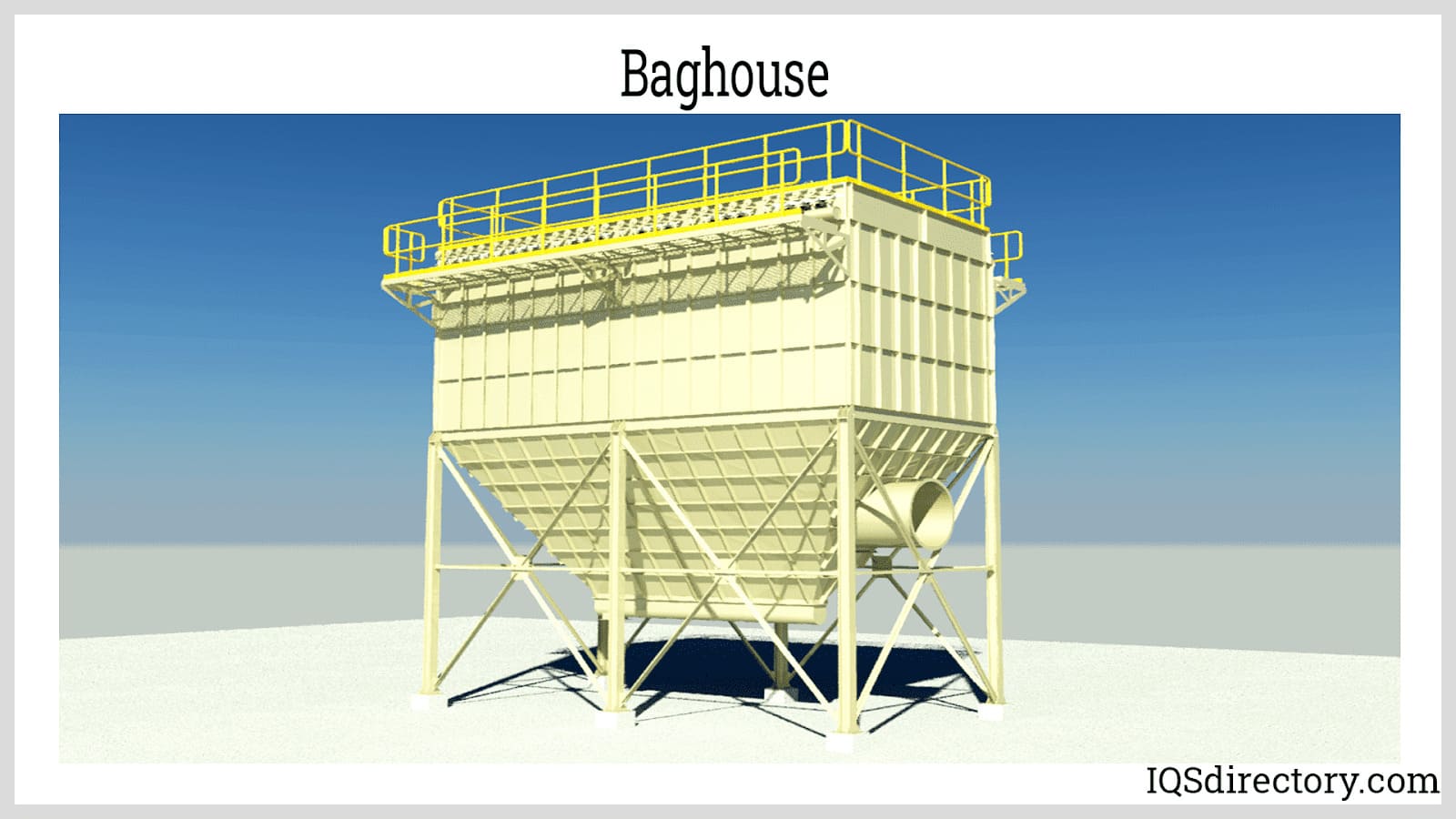
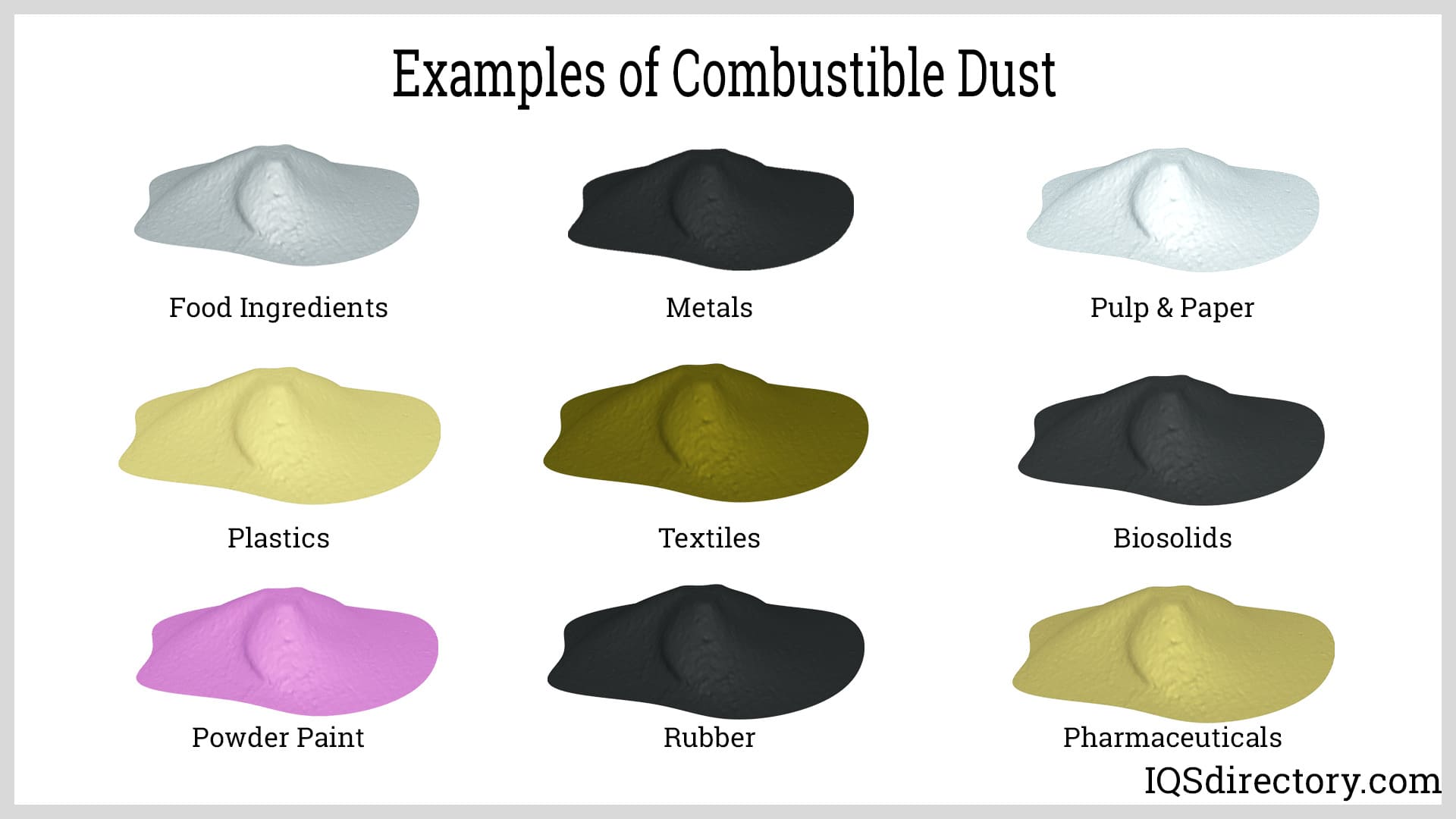
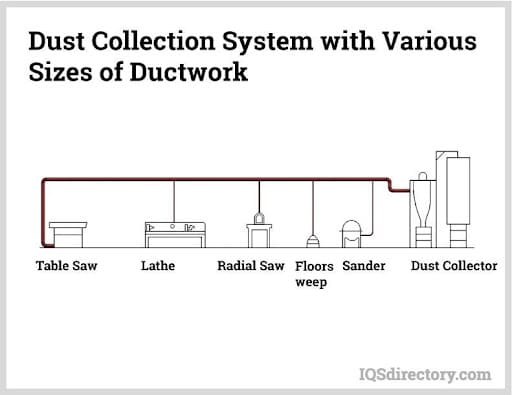
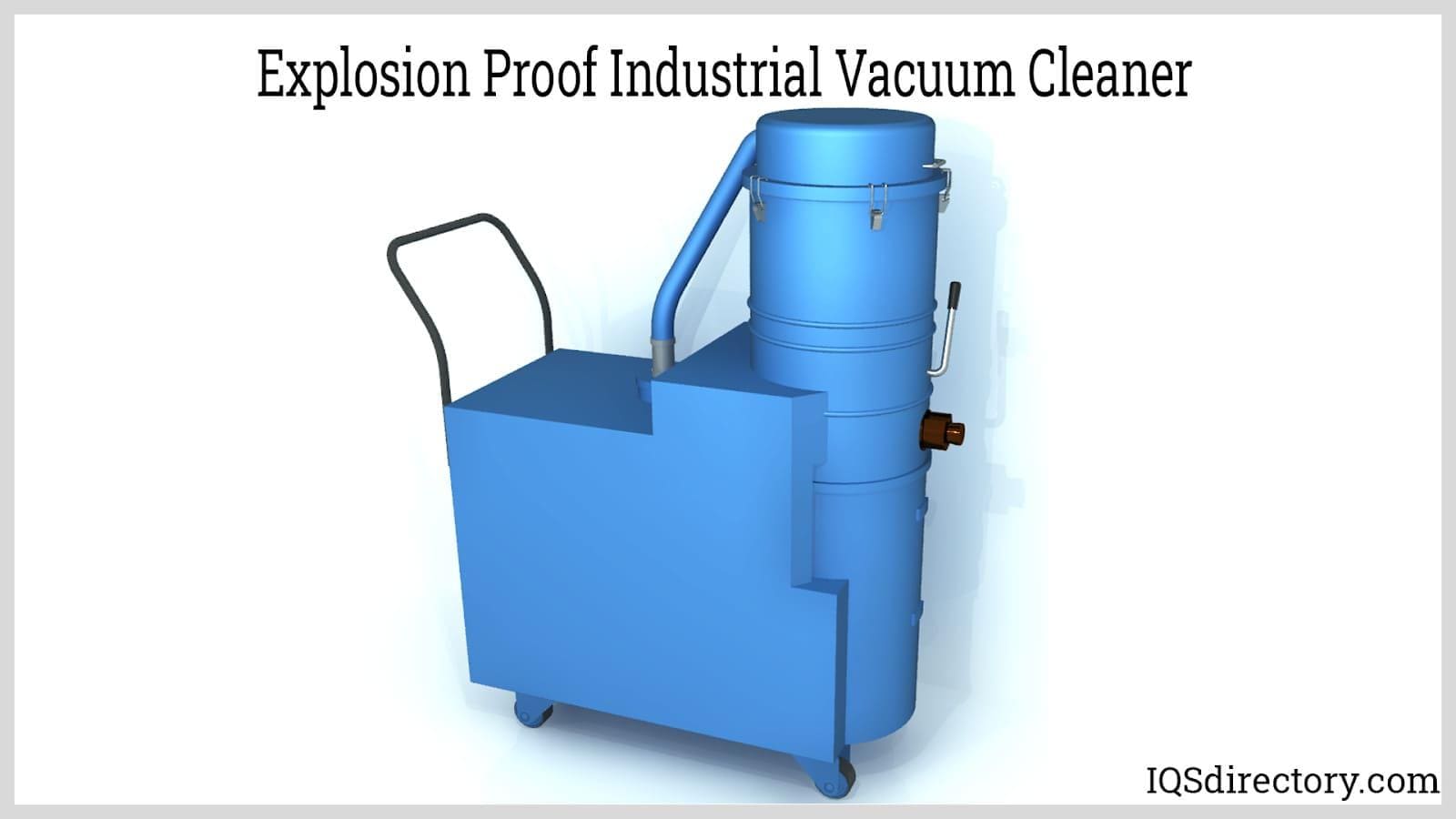
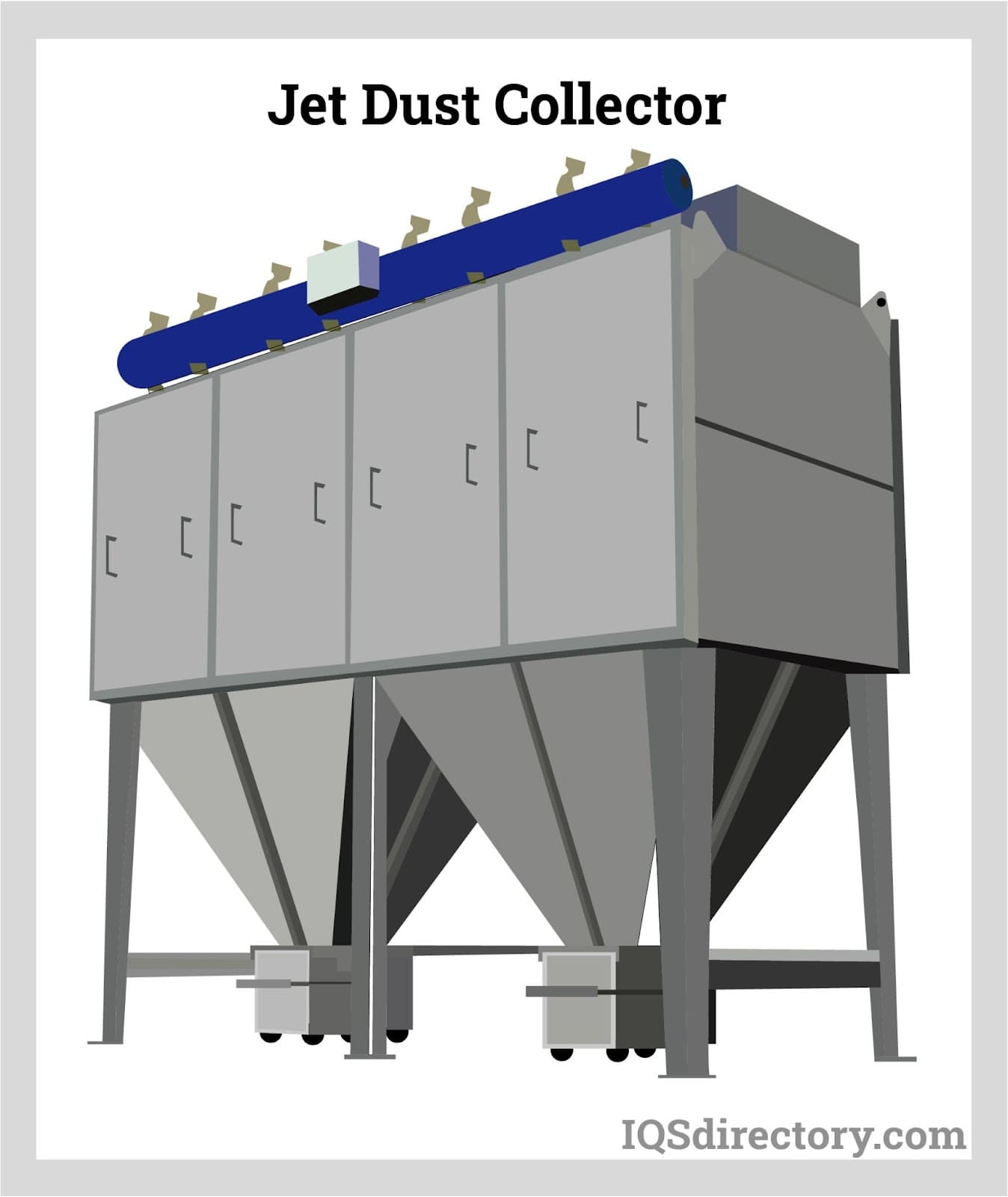
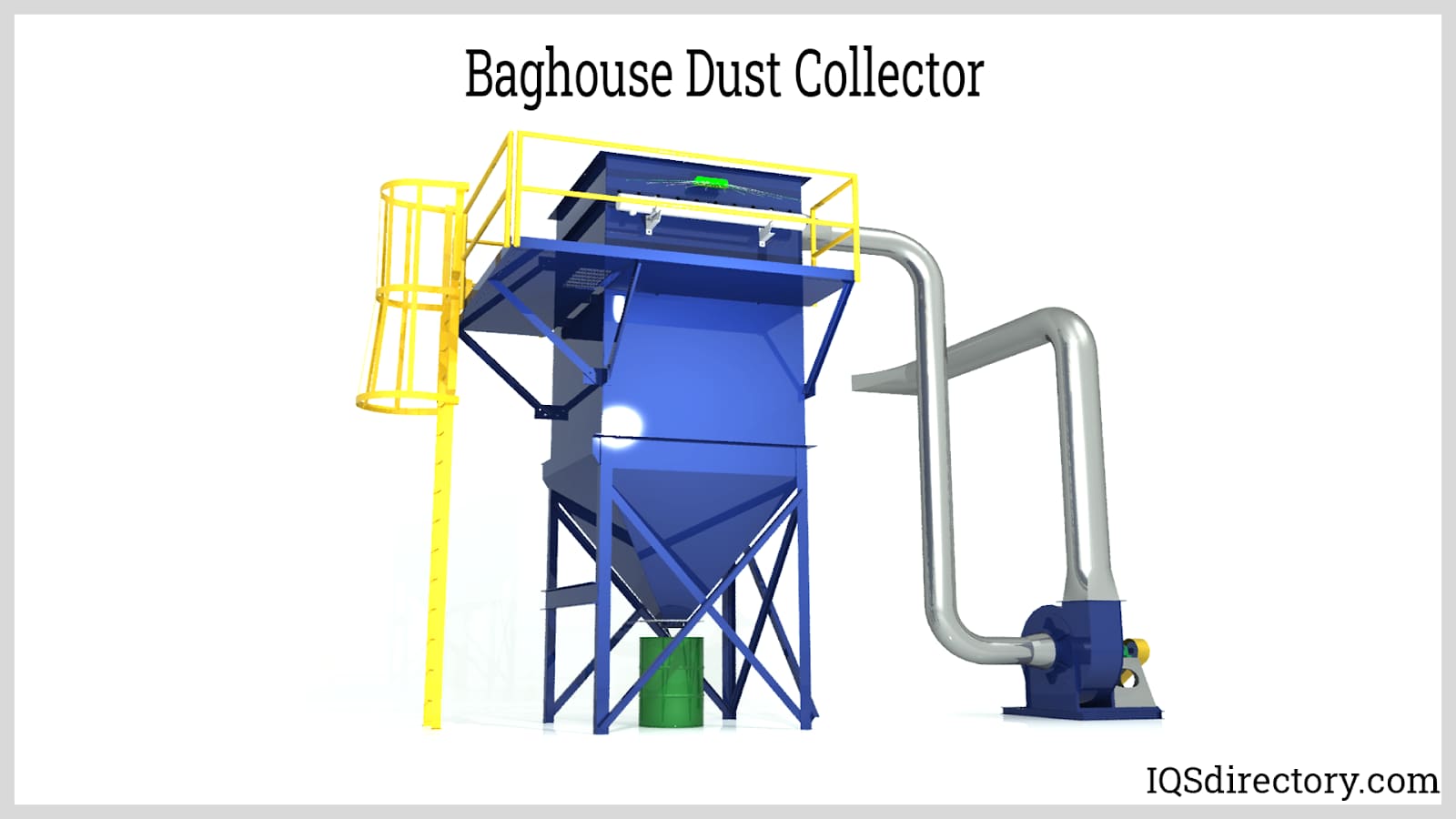
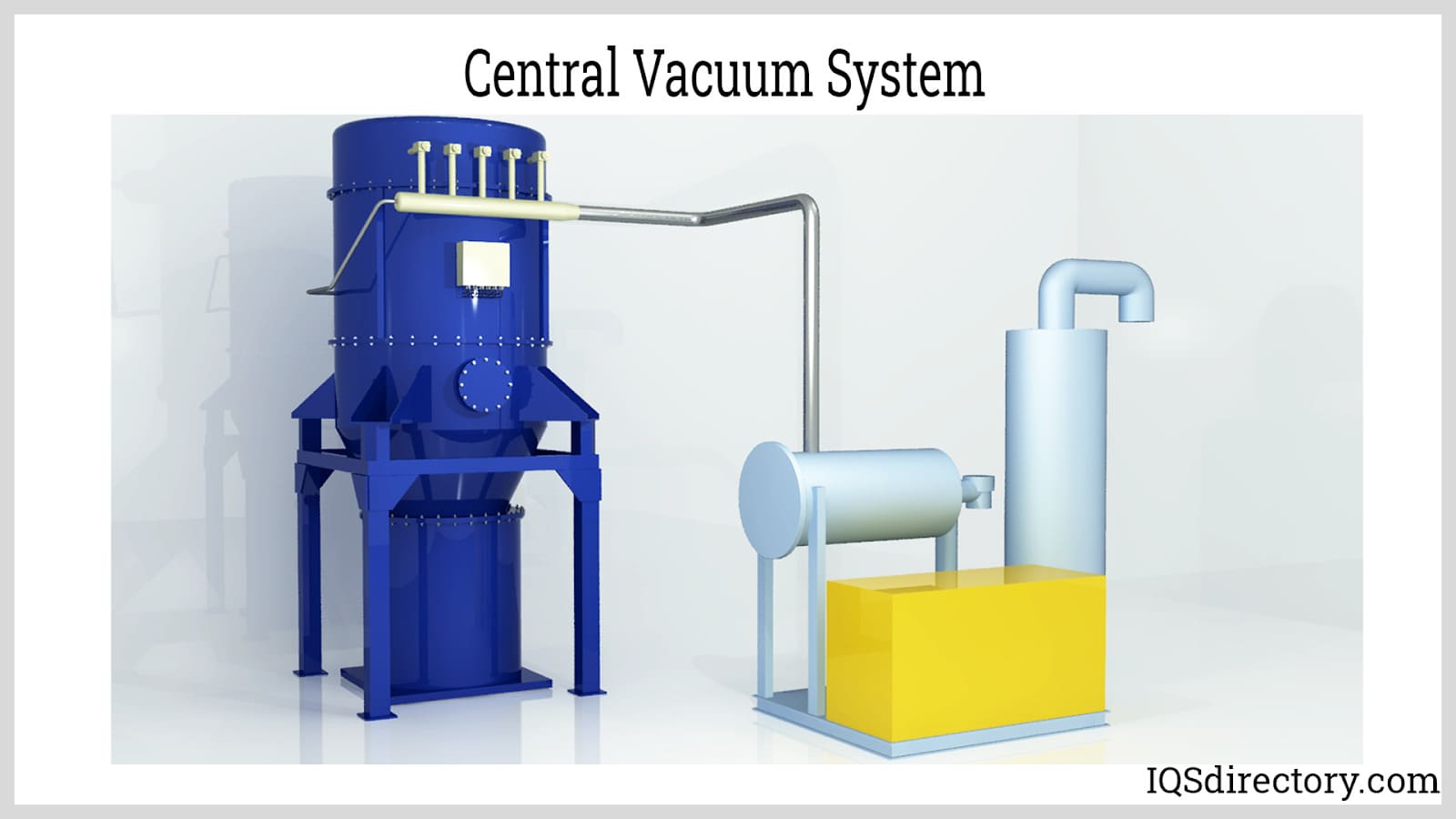
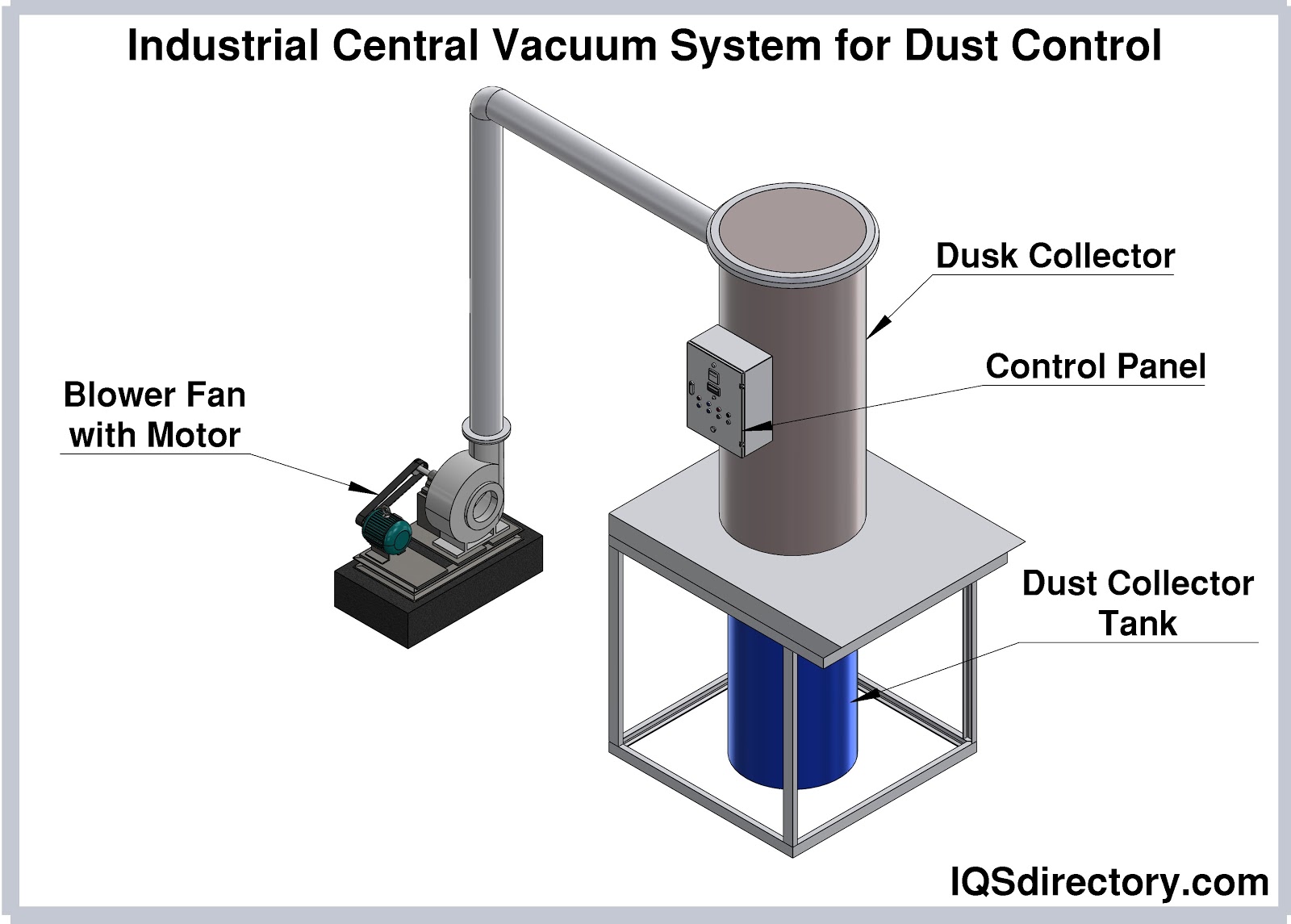
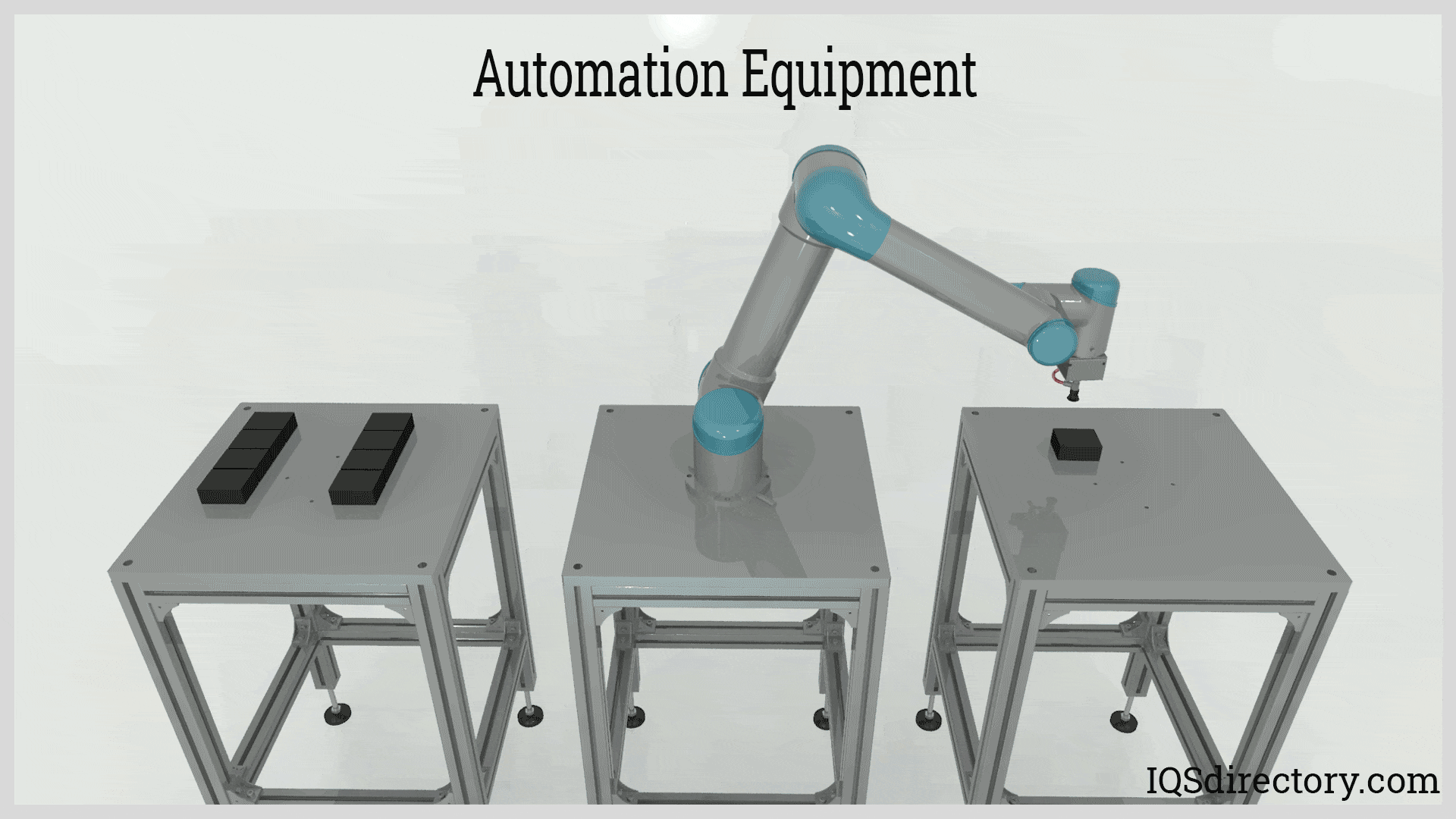
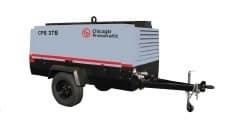 Air Compressors
Air Compressors  Air Filters
Air Filters Air Pollution Control
Air Pollution Control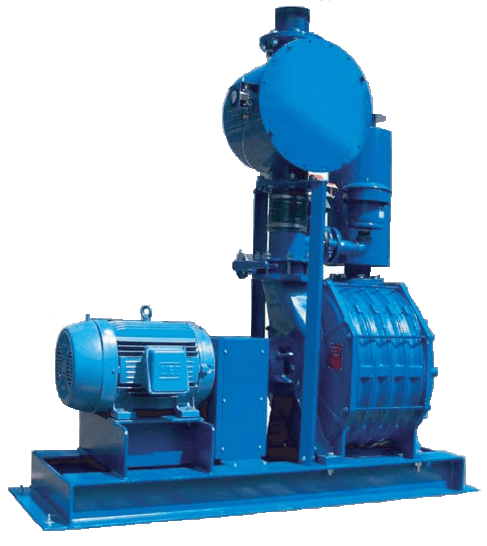 Blowers
Blowers Dust Collectors
Dust Collectors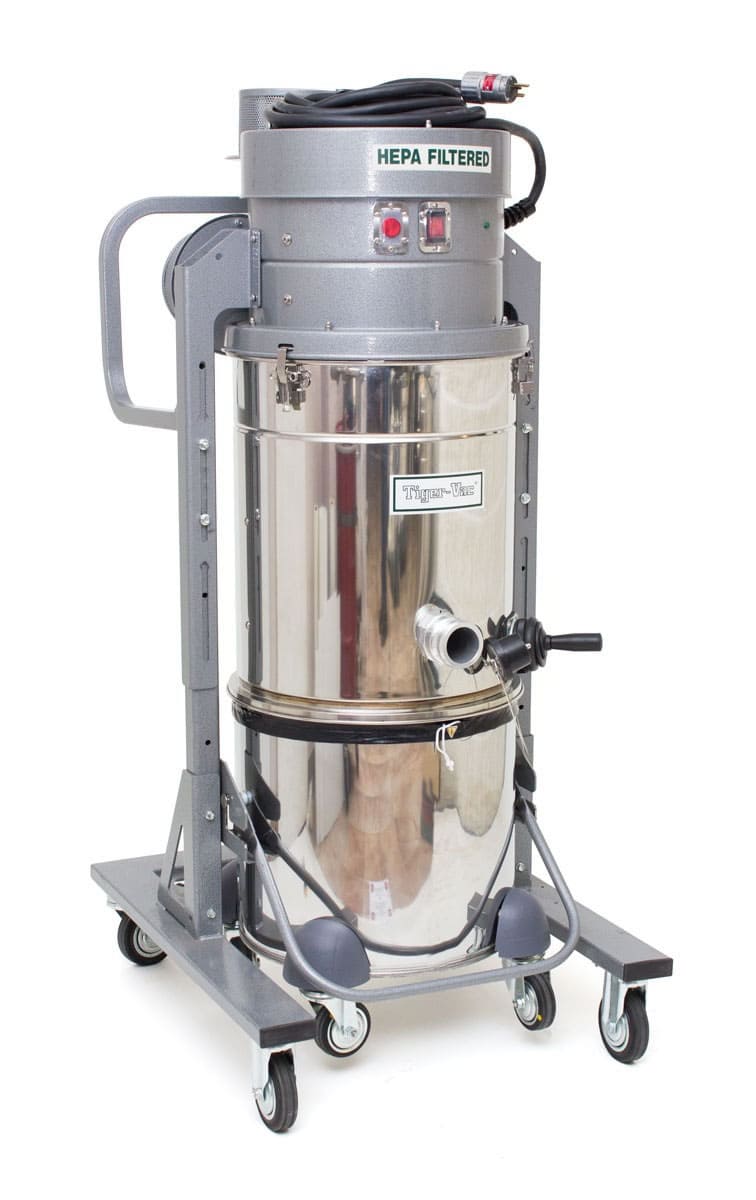 Industrial Vacuum Cleaning Equipment
Industrial Vacuum Cleaning Equipment Castings & Forgings
Castings & Forgings Bulk Material Handling
Bulk Material Handling Electrical & Electronic Components
Electrical & Electronic Components Flow Instrumentation
Flow Instrumentation Hardware
Hardware Material Handling Equipment
Material Handling Equipment Metal Cutting Services
Metal Cutting Services Metal Forming Services
Metal Forming Services Metal Suppliers
Metal Suppliers Motion Control Products
Motion Control Products Plant & Facility Equipment
Plant & Facility Equipment Plant & Facility Supplies
Plant & Facility Supplies Plastic Molding Processes
Plastic Molding Processes Pumps & Valves
Pumps & Valves Recycling Equipment
Recycling Equipment Rubber Products & Services
Rubber Products & Services